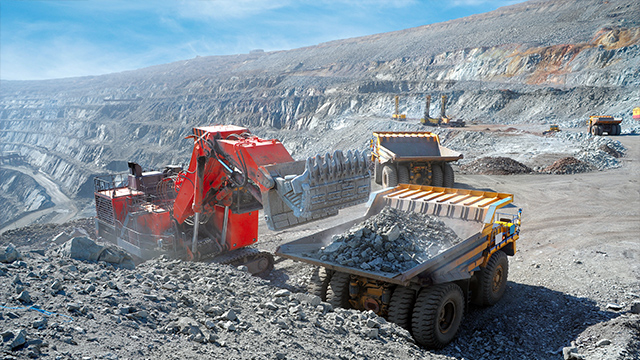Global Iron Ore Market Shifting to a Buyer's Market Amid Loosening Supply-Demand Dynamics
2024-12-25 11:32:07 hits:0
Introduction
In recent years, the global iron ore market has undergone a series of complex transformations. The latest market data indicates that the supply-demand balance is gradually tilting towards a more relaxed state, signaling a potential transition towards a buyer's market for iron ore. This shift not only profoundly impacts iron ore prices but also has significant implications for the steel industry and the global economy.Supply-Side Growth Analysis
On the supply side, global iron ore production continues to climb. According to industry reports, global iron ore production in 2024 is expected to increase by over 66 million tons, reaching approximately 2.55 billion tons, a record high. Overseas mines, particularly in Australia and Brazil, which are major suppliers of iron ore globally, have seen significant production increases. For instance, Mysteel's statistics show that mainstream Australian and Brazilian iron ore production in 2024 is expected to reach about 1.4 billion tons, up 0.7% year-on-year, although the incremental volume accounts for only 15% of the global increase, marking a decline compared to previous years. In contrast, non-mainstream countries such as India, Ukraine, and African nations have seen more notable growth in iron ore production, providing significant increments to the global iron ore market. Meanwhile, domestic mines in China have also witnessed steady growth in iron ore production, driven by the resumption of old mine capacities and the commissioning of new capacities. However, it is noteworthy that despite the continuous expansion of domestic iron ore raw material capacity, factors such as environmental policies and resource endowments have resulted in underutilized capacity and a relative surplus in market supply.Demand-Side Growth Analysis
On the demand side, global iron ore demand continues to increase, but the growth rate has gradually slowed down. In 2024, according to research reports by China Research and Intelligence, overseas iron ore demand may increase by 24 million tons, while Chinese iron ore demand is expected to increase by about 8 million tons. However, compared to the incremental supply side, the growth on the demand side appears relatively sluggish. Especially in China, with the advancement of steel industry transformation and upgrading, capacity reduction policies, and the increased use of scrap steel, the demand for iron ore has weakened to some extent. Statistics indicate that in 2024, China's crude steel production demand is expected to decline by 3 million tons, and domestic steel plants are expected to net-eliminate pig iron capacity of 6.12 million tons through blast furnace capacity replacement. Consequently, domestic pig iron production is expected to decrease by about 8 million tons.Price Trend Analysis
The loosening of supply-demand dynamics has directly led to a decline in iron ore prices. In recent years, iron ore prices have exhibited a clear downward cyclical trend. Especially since the beginning of 2024, the price center of iron ore has continued to shift downwards. Specifically, on December 24, 2024, the price of 62% grade iron ore from India at Jiangyin Port was 749 yuan/ton, while the price of 62% grade iron ore from Australia at Jiangyin Port was 808 yuan/ton. Compared to previous years, these prices have decreased. Fitch Solutions' BMI division's forecast also shows that iron ore prices are expected to average 100pertonin2025,downfrom156 per ton in 2021.Impact of a Buyer's Market
In the new stage of a buyer's market, iron ore transactions will focus more on buyers' needs and interests. Steel companies, as the primary buyers of iron ore, will have more options and bargaining power. They can flexibly adjust their iron ore procurement volumes and timing based on their production plans and cost control requirements. Meanwhile, the formation of a buyer's market will also intensify competition among iron ore suppliers, prompting them to improve product quality and service levels to secure a larger market share. However, the formation of a buyer's market does not mean that the iron ore market will be completely dominated by buyers. Suppliers still need to pay attention to changes in market demand and adjust their production plans and sales strategies accordingly.Future Outlook
In the future, with the recovery of the global economy and the sustained development of the steel industry, the iron ore market will still maintain certain growth potential. However, the loosening of supply-demand dynamics and the formation of a buyer's market will make competition in the iron ore market more intense. Steel companies need to closely monitor market dynamics and formulate reasonable procurement strategies to address potential market risks and seize market opportunities for sustainable development.Conclusion
In summary, the global iron ore market is gradually shifting towards a more relaxed state, with the formation of a buyer's market becoming a future trend. This change not only provides steel companies with more options and bargaining power but also promotes competition among iron ore suppliers and the healthy development of the market.

 en
en  fra
fra  de
de  ru
ru  gle
gle  th
th  ara
ara  it
it  jp
jp  kor
kor  zh
zh 


